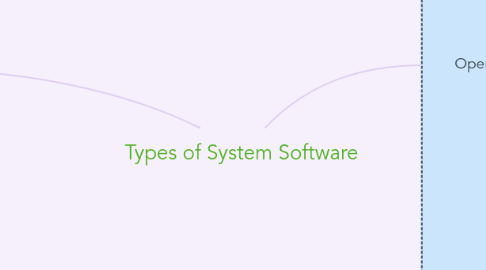
1. Utility Program
1.1. A type of system software that allows a user to perform maintenance-type task
1.2. Types of utility program:
1.2.1. - File Manager
1.2.1.1. To provide routine file management tasks
1.2.2. - Disk Cleanup
1.2.2.1. Searches and removes unnecessary files
1.2.3. - Compression Tools
1.2.3.1. To shrink the size of a file
1.2.4. - Anti-Virus Program
1.2.4.1. To protect a computer against viruses by identifying and removing any computer viruses found in memory, on storage media or incoming files
1.2.5. - Spyware Remover
1.2.5.1. To detect and delete spyware
1.2.6. - Disk Defragmenter
1.2.6.1. To reorganize the files and unused space on computer hard disk so that the OS accesses data more quickly and programs run faster
1.2.7. - Backup and Restore
1.2.7.1. A backup utility allows users to copy files to another storage medium in case of damage or lost
1.2.7.2. A restore utility reverses the process and returns backed up files to their original form
2. Operating System
2.1. An operating system is a set of programs containing instructions that work together to coordinate all the activities among computer resources
2.2. Types of OS:
2.2.1. - Stand-alone Operating System
2.2.1.1. A complete operating sytem that works on a desktop computer, notebook computer or mobile computing device
2.2.1.2. Proprietary software:
2.2.1.2.1. Windows
2.2.1.2.2. Mac OS X
2.2.1.3. Open source software:
2.2.1.3.1. Unix
2.2.1.3.2. Linux
2.2.1.3.3. Ubuntu
2.2.2. - Server Operating System
2.2.2.1. Is designed to support a network
2.2.2.2. Proprietary software:
2.2.2.2.1. Windows Server 2008
2.2.2.2.2. Netware
2.2.2.3. Open source software:
2.2.2.3.1. Unix
2.2.2.3.2. Linux
2.2.2.3.3. Solaris
2.2.3. - Mobile Operating System
2.2.3.1. Resides on a ROM chip on a mobile device or consumer electronic device
2.2.3.2. Proprietary software:
2.2.3.2.1. Windows Phone 7
2.2.3.2.2. iPhone OS
2.2.3.2.3. BlackBerry
2.2.3.3. Open source software:
2.2.3.3.1. Google Android
2.2.3.3.2. Embedded Linux
2.2.3.3.3. Symbian OS

